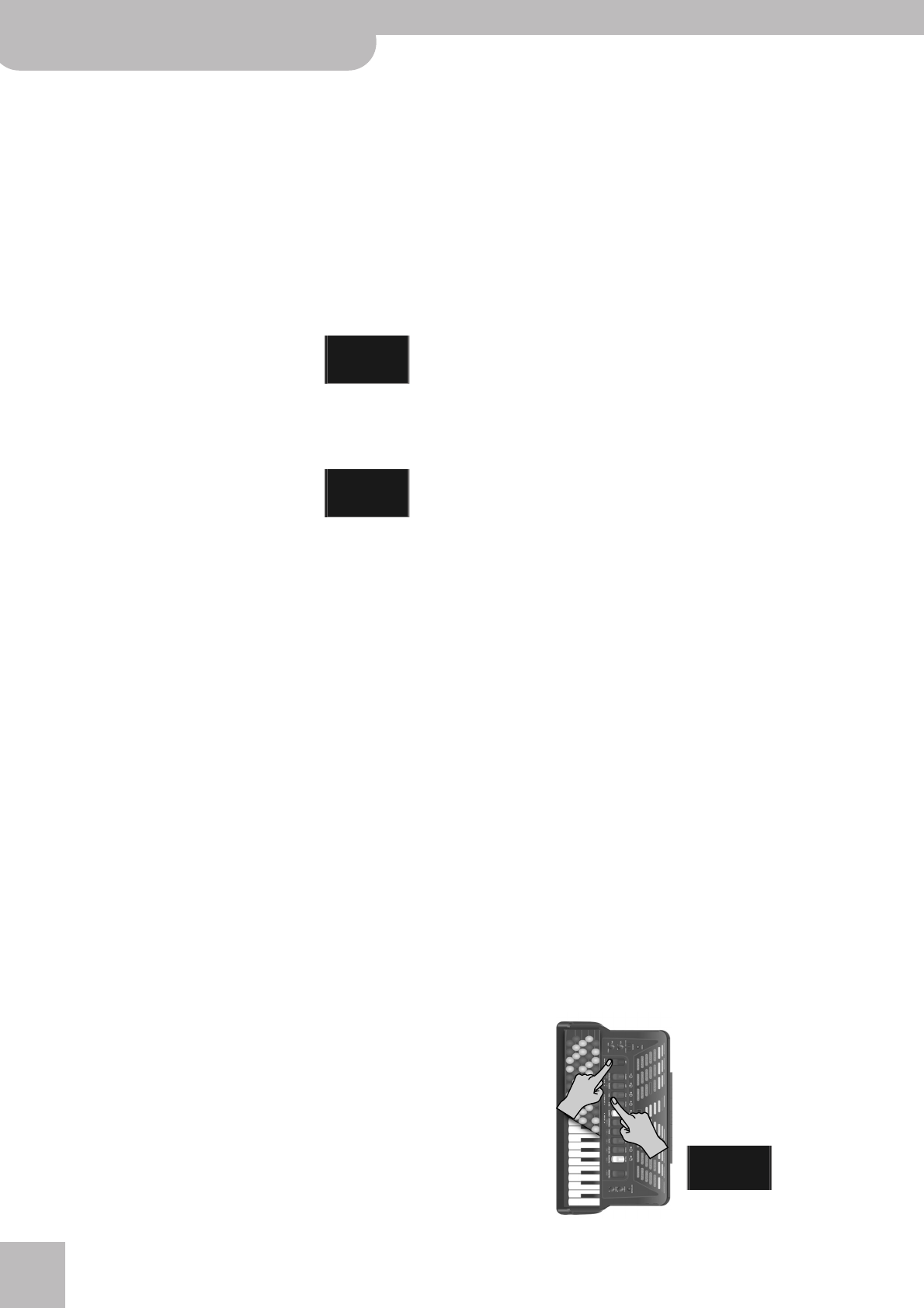
Editing settings | PARAM LIST parameters
52
r
FR-3s/FR-3/FR-3sb/FR-3b V-Accordion
You probably noticed that each entry represents a
group of 128 possibilities. By selecting an entry, you
tell the FR-3: “Whenever I select a memory number
between 257 and 384 on the ‘SPC’ page, please con-
vert that to a program change number 1~128, and
add the two CC values I’m about to specify.”
Note: This function can also be used to select the Patches on
an SRX-series expansion board which you installed in a G-70,
for example.
(4) Press the [6÷®] register to select “C00” and use [1÷–]
or [2÷+] to select a value (0~127).
“0” corresponds to the first bank (called the “Capital
bank” on GM2/GS-compatible instruments).
Be sure to select this number based on
the information given in the owner’s
manual of the instrument you wish to
control. Be sure to also specify the correct CC32
number.
(5) Press the [6÷®] register to select “C32” and use [1÷–]
or [2÷+] to select a value (0~127).
Again, the value to enter here depends
on the information you find in the
manual of the instrument you want to
control. Some manufacturers don’t use CC32 mes-
sages for sound selection, others use them to define
modes, and still others rely on them as complemen-
tary bank information.
(6) Press register [5÷√] to select “bPC” again, then use
register [1÷–] or [2÷+] to select the next memory
group, and repeat steps (4) and (5).
(7) See “Saving your changes” on p. 26 if you want to
keep your changes.
To use them only temporarily, press the [SET] register
to leave “MIDI LIST” mode.
(8) Now use the “SPC” page to test your assignments.
See step (1) and following on p. 51.
Archiving your settings via MIDI (Bulk Dump)
MIDI can also be used for transmitting parameter set-
tings from the FR-3 to an external MIDI device and
back.
■Archiving your settings with a sequencer
The “dMP” parameter allows you to transmit the con-
tents of the global area (that contains the PARAM LIST
and MIDI LIST settings) to a second FR-3s/FR-3sb or
FR-3/FR-3b, an external sequencer, computer or data
filer. Sending these data to other instruments (a digital
piano, synthesizer, etc.) does nothing at all. That’s
because the setting data are special MIDI messages only
one model (or model family) understands. They are
called “system exclusive messages” – or “SysEx” for
short. By transmitting them to a second FR-3, however,
you can “copy” the settings of your V-Accordion to that
of a friend, colleague or student.
A sequencer or data filer does not know what the mes-
sages mean and so does not use them in any way. It
merely records them. Afterwards, you only need to start
playback on your sequencer or data filer to transmit the
settings back to the FR-3.
(1) Connect the FR-3’s MIDI OUT/IN socket to the
sequencer’s/computer’s MIDI IN socket.
See page 45 for a connection diagram.
Note: Your computer needs to be equipped with (or connected
to) an appropriate MIDI interface.
(2) Set the “MId” parameter (page 48) to “Out”.
(3) If you are working with a computer, launch the
sequencer program.
(4) Create or select an empty song.
(5) Create (or select) an empty track.
The track’s MIDI channel is of no importance here.
You need to ensure, however, that the sequencer/
program accepts SysEx data. If necessary, switch off
the MIDI filter in question (see the manual of your
sequencer or software).
(6) Activate the record-ready mode of the track you
selected/created.
Note: It would be wise not to change the tempo on your
sequencer/in the software. By default, most sequencers/pro-
grams use the tempo value q= 120. Leave it that way (or else
do whatever is necessary to ensure that the new tempo value
is stored along with the data).
(7) Press and hold the [SET] register until the display
shows a parameter name, then release it.
(8) Use register [5÷√] or [6÷®] to select the following
parameter.
C00
C32
dMP


















